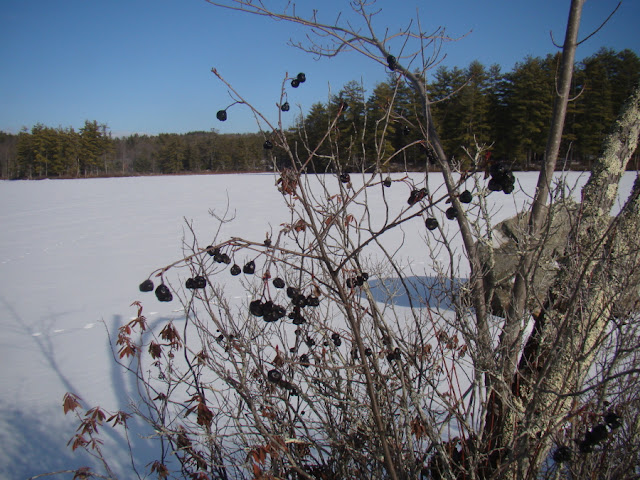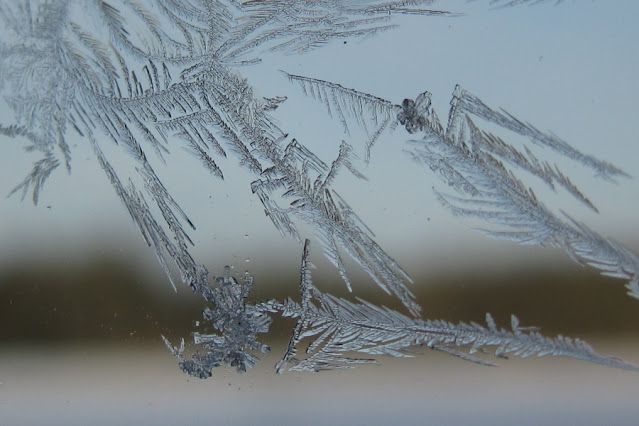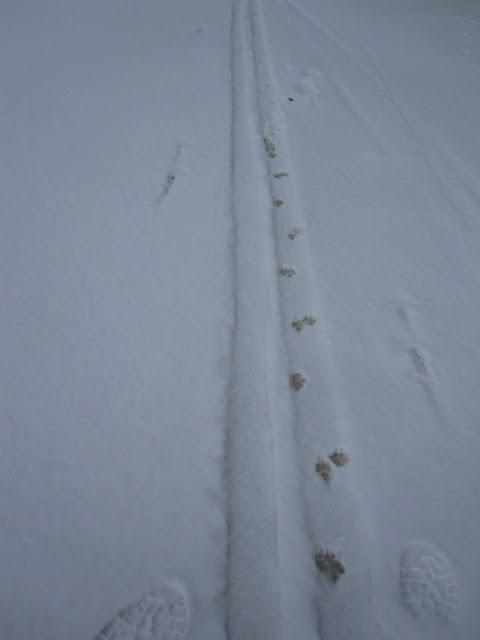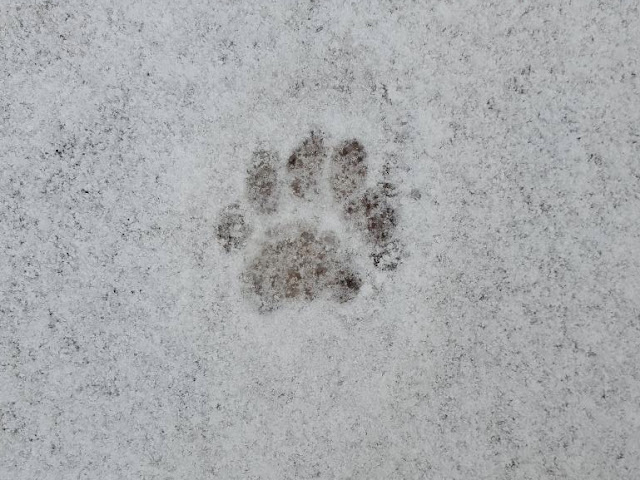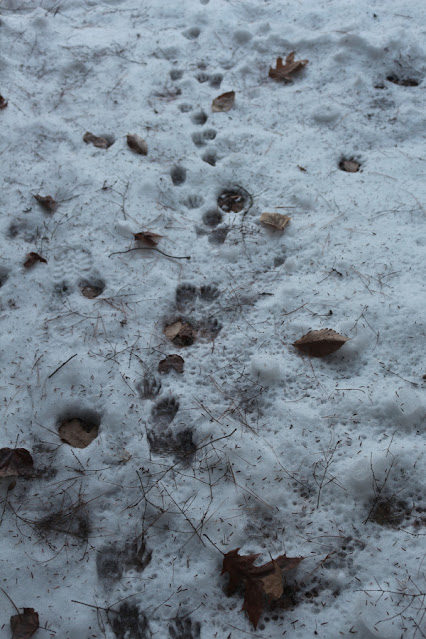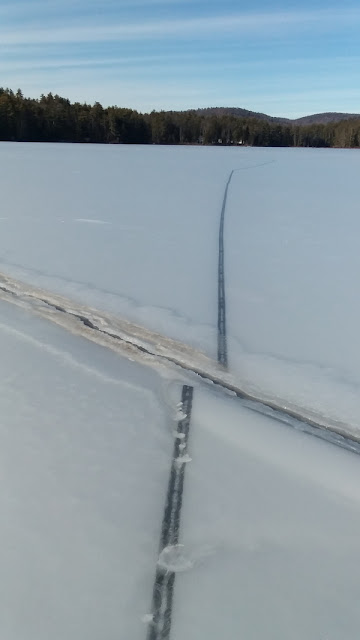Old mother west wind, to borrow a phrase from Thornton Burgess, sure was busy this week. Not only did she usher in some real cold, but she swept almost the entire surface of Lake Wicwas clear of the recent snow.
 |
| Ready for skating again. |
The snow could be seen blowing through the air, swirling into snow-tornadoes rushing down the lake before being dumped on windward shores where the trees ended their journey. There were parts of the lake that didn't want to release its snow, hanging on to it in variously shaped islands with sculpted cliffs, a miniature version of the geological facies found in southwest regions like Moab and Bryce Canyon.
On one of those windy days I came across a set of tracks in the piled up snow near shore that I wouldn't have identified if I hadn't seen the culprit in action.
 |
| Who left these? |
I could have spent hours searching through tracking books and not identified them. I'll share a few more pictures before I reveal the perpetrator in case you want to figure it out.
Hint: Remember it was a windy day, and it was close to shore.
So here's the answer:
That old mother west wind was having a good time tossing a white pine cone around the lake.
I have a recollection of seeing a mark similar to this in the past, but wasn't sure what caused it; having seen proof now I hope the memory will stick for future observations.
With the cold and the wind I didn't observe much animal activity out there, and whatever tracks they made were quickly filled in with blowing snow. But I did come across this tiny set of mouse tracks in a sheltered spot.
 |
| A mouse travelling back and forth between hidey-holes in the snow. |
The strong wind also did some work on the ice hanging off the eaves where snow had frozen and slid slowly out to hang in the breeze.
 |
| More wind sculptures. |
I was fortunate enough to pick the calmest day of the week to ski up Mt. Cardigan, and though it was perfectly calm on the summit, proof of the wind was visible in the wind-scoured rocks and rime ice formations.
With the cold weather, Meredith Bay is also finally iced-over, getting prepared for the Pond Hockey Tournament next weekend.
 |
| A cold day on Meredith Bay, with the Belknap Range in the background. |











